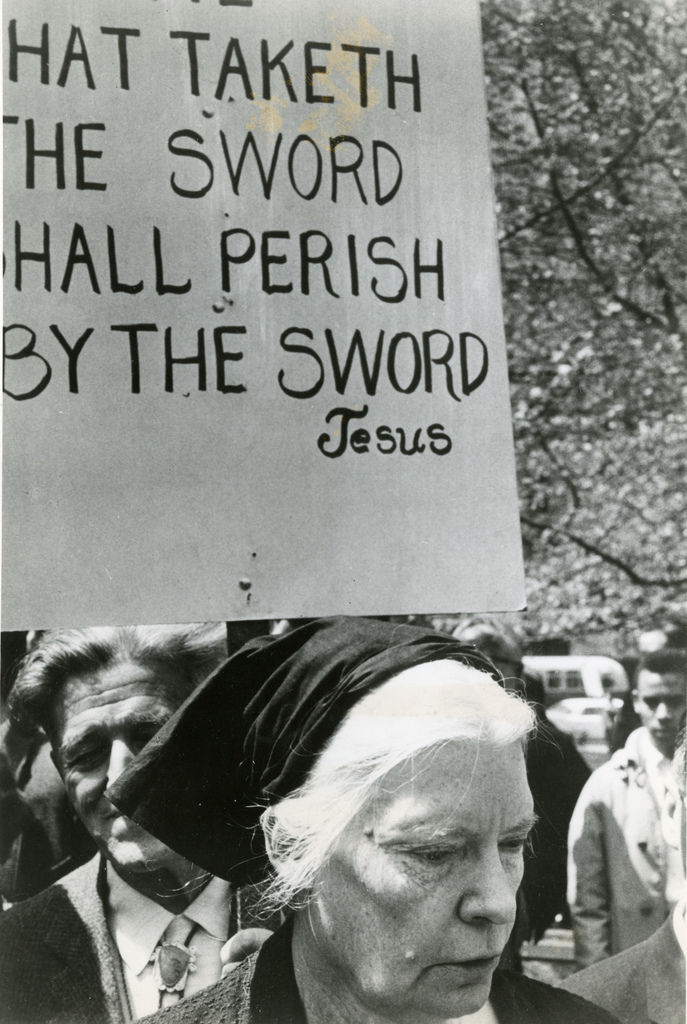The Catholics Working for Peace: Dorothy Day Inspires Fight Against Nuclear Weapons
- lifemattersjournal

- Sep 19, 2017
- 3 min read

After work on a Friday, I am usually pretty tired. All I want to do is go home, watch Netflix, and take a nap. I thought more than once about skipping the talk at the Catholic Worker House that I was planning on going to. But my curiosity got the better of me. Even though I had learned about the movement and their founder Dorothy Day in high school, I had never been to a Catholic Worker event. I wanted to see what the Catholic Worker Movement was all about.
The Catholic Worker movement was started by activist Dorothy Day. Day was born in Brooklyn in 1987. She was very bright and well read, going to college at the age of 16. During college, Day started thinking about social issues. She started her writing career at the New York Call, a socialist newspaper, at the age of 18. She started feeling a call to something greater in a dark period of her life, after she had an abortion and the father of her aborted child left her. She then entered into a common-law marriage with biologist Foster Battingham who shared her concern for the poor, but despised religion. Day was happy during this time, but still felt like she was missing something. After some time Day became pregnant. This upset Foster because he did not believe it was right to bring children into the world. Foster became even more furious when Day decided to have their daughter Tamar baptised Catholic. After Day was diagnosed with a nervous disorder, Foster left and Day fulfilled her desire to become Catholic. While writing about a hunger march put on by Communists, Day realized she felt a disconnect between two things that should be intertwined: authentic Catholic belief and social justice. This lead Day to start the Catholic Worker movement, beginning with the first Catholic Worker newspaper in 1933. Many considered Day to be a saint in her time, but she would not allow herself to be called this. She also insisted that she in fact did not start the Catholic Worker Movement. That honor, she said, went to her friend and mentor Peter Maurin.
Today, there are 120 Catholic Worker Communities. These communities are dedicated to nonviolence, works of mercy, manual labor, and voluntary poverty. They advocate for the dignity of all for promoting decentralization of government, agriculture, education, and health care. The Catholic Worker Movement calls for the weakening of capitalism in our society because the economic system puts more worth on profits than workers. The Catholic Workers believe that people should be engaged in meaningful work. They also advocate for an end to classism, sexism, and racism. The Catholic Worker Movement also stresses that the right to life means a world free of nuclear weapons.
The Catholic Worker house looked like any other on the Northeast DC street. But when you stepped inside, there were pictures, icons, and other artwork commemorating great social justice heros. Rows of chairs anticipated the crowd that would come. I thought it unlikely that all the chairs would be filled, but I was wrong. People started to fill into chairs, couches, and benches, with many people eventually standing in the back, catching a glimpse of the speakers, Sister Ardeth Platte and Sister Carol Gilbert. Both are Dominican sisters were present at the historic “UN Conference to Negotiate a Legally Binding Instrument to Prohibit Nuclear Weapons”, where 122 countries voted to abolish nuclear weapons. Unfortunately, the United States would not even discuss the measure and boycotted the vote. Both sisters then traveled to Germany to show the German people that many Americans do want to see nuclear disarmament. The point that hit home the most for me was the sisters’ sharing of how in the United States, the vast majority of those fighting the abandon nuclear weapons are older. In other countries, many young people are taking up the fight against nukes. This made me even more determined to stand up against the United States’ nuclear weapons.
I am so glad I did not give into my Friday night sloth and instead went to visit the Catholic Worker house. Having knowledge about communities and movements like the Catholic Worker is one thing, but going to visit and hearing about what the people are fighting for is quite another. I was encouraged by all the sisters had to say, and quite encouraged by the community itself. At the end of the evening, we pushed back the tables and chairs to transform the room into its pre-event state. It was a dining room, with two high chairs and a booster seat. This brought home the point of what we are fighting for, and what Dorothy Day was striving for her whole life: beating our swords into plowshares so that the children of today might have a brighter future tomorrow.



Comments